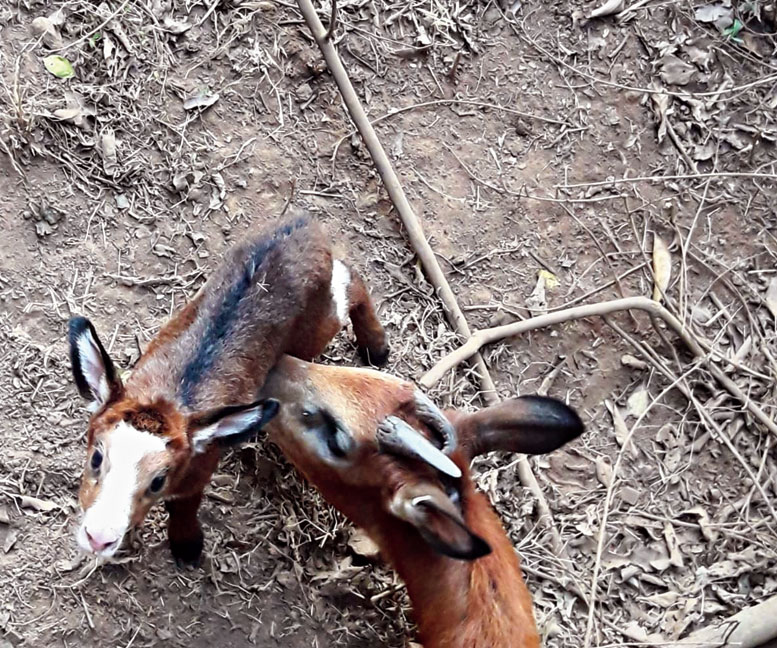A loan breeding arrangement between Assam and Nagaland zoos bore fruit after a Himalayan serow calf, an endangered species, was born here on Wednesday, the day of Magh Bihu.
This was the first time that animals have been exchanged on breeding loan and the breeding has been successful.
The serow calf was brought from Nagaland last February.
“The Assam zoo, which is the coordinating zoo for conservation breeding of serow, had only two female serows and Nagaland Zoo had only one male. Nagaland zoo sent the male serow to the Assam zoo for breeding for a certain period of time. The programme was approved by the Central Zoo Authority,” Assam zoo divisional forest officer Tejas Mariswamy said.
He said the male and female serows were carefully paired within 10 months of arrival of the male.
“On January 15, the first serow calf was born. It is a very special occasion for both zoos and for the conservation of this animal,” he added.
The heads of the forest department of both the states congratulated the zoos on the success.
“This is the first time animals have been exchanged and have successfully bred. The forest ministers of both the states wished for the well being of the calf and congratulated both the zoos,” Mariswamy said.
The Himalayan serow (Capricornis thar) is a goat-antelope native to the eastern Himalayas and eastern and southeastern Bangladesh. It is listed as near threatened on the IUCN Red List because the population is considered to be declining due to habitat loss and hunting for its meat. It is considered a flagship species due to its specialised habitat requirements of dense and undisturbed forests.
The species is characterised by its large head, long mule-like ears, thick neck and short limbs.
They have a coarse coat, which varies in colour from grizzled black, blackish grey-roan to red.
The limbs of the Himalayan serow are reddish-brown above the knee and dirty white beneath.
They inhabit steep hills with rocky slopes, especially limestone regions, up to 3,000 metres above sea level,
and also hills and mountain forest areas with gentler terrain.
Recently, Assam State Zoo shot into global limelight with the hatching of a pair of greater adjutant stork chicks in an artificial platform within the zoo enclosure.










